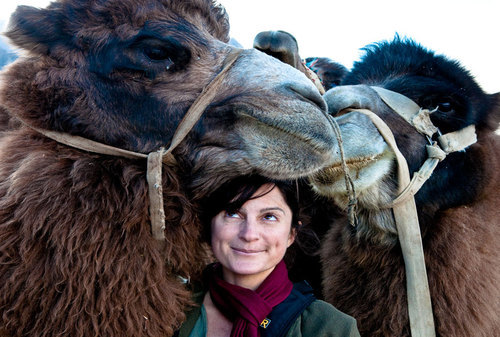A large part of a photojournalist’s job is building or maintaining relationships with people every day. However, the practicality of building those relationships and knowing where to draw the line can be a bit of a challenge. In an email interview, National Geographic photojournalist and documentary filmmaker Ami Vitale shared some tips on building relationships:
IJNet: What are your thoughts on giving your subjects material things, e.g. food, as a means of establishing relationships or building trust?
Vitale: When you give money or material things, it becomes a business relationship and creates unrealistic expectations. In photojournalism, we have very strict guidelines, and paying people for interviews or to take their photo is considered unethical. The National Press Photographers Association has a helpful set of guidelines here.
In some circumstances, I will bring fruit or lunch as a gesture to show I respect them and their time. But I never bring large gifts or money in exchange for an interview. One thing I always do is bring back photos (and if you offer, make sure to do it. It’s much worse to promise something and then not follow through).
In an effort to create relationships with subjects, one can immerse themselves in a culture by respecting the people and being mindful of their culture. To what extent can a photojournalist immerse him/herself in a culture? When in Rome, should photojournalists do as the Romans do?
I might wear a veil or conservative clothing like a burqa when I am in conservative country where that is the cultural norm. But I don't pretend to be someone that I am not. For example, I don’t pretend I am a devout religious person and get my hair cut to prove that. Being transparent and honest about your differences is much better than trying to pretend you believe in the same things when you don't.
 Do you think equipment and gear can at times hinder or aid a photojournalist’s access to an individual or a space?
Do you think equipment and gear can at times hinder or aid a photojournalist’s access to an individual or a space?
The secret is really knowing your gear before you go on an assignment. Know your equipment so you can focus on relating to people you are photographing. If you exude apprehension or tension, people pick up on it and cannot relax with the added element of a camera.
Do you think being able to empathize with your subjects can help you relate better with your subjects?
Remember, we have more in common with each other than you might think. Don’t look at people as different or exotic. Rather, focus on the things that unite and bind us.
There is a beautiful, universal truth everywhere that if you peek under the veil, you’ll find a wondrous commonality between us. Use your camera not just as an extension of your eye, but also as an extension of your heart.
When building relationships, what do you think are the most valuable assets?
Getting close and intimate with people requires time and understanding. I don’t view photography as solely an adventure. Although we get to witness extraordinary things, the magic really begins when you stay in a place and give yourself enough time to gain insight and understanding. I would rather spend more time in one place than try to see it all. Successful pictures of people almost never happen from a distance. Put away the telephoto lens and carry a wide lens like the 24mm or 35mm. You get closer physically and it shows intimacy in the photos.
Talking to strangers or esteemed people can be difficult and nerve-wracking for some photographers. How do you manage to connect with your subjects?
Whether it’s simply a nod of acknowledgement, a greeting, an explanation of what you’re doing or a long, involved conversation, I always explain why I am there; what is the purpose of taking these photos.
Before I leave home, I always make contact with the leaders in the community I’m working in. There’s always a hierarchy in every community. If you take the time to explain why you’re there and get the blessings of the leaders or elders before you begin your work, it will let everyone in the community understand why you are there. News travels fast and having the blessings of the leaders will keep you safer than wandering around aimlessly.
To see Vitale’s work, visit amivitale.com or instagram.com/amivitale.
Main image CC-licensed by Flickr via open-arms. Second image courtesy of Vitale's Twitter.

